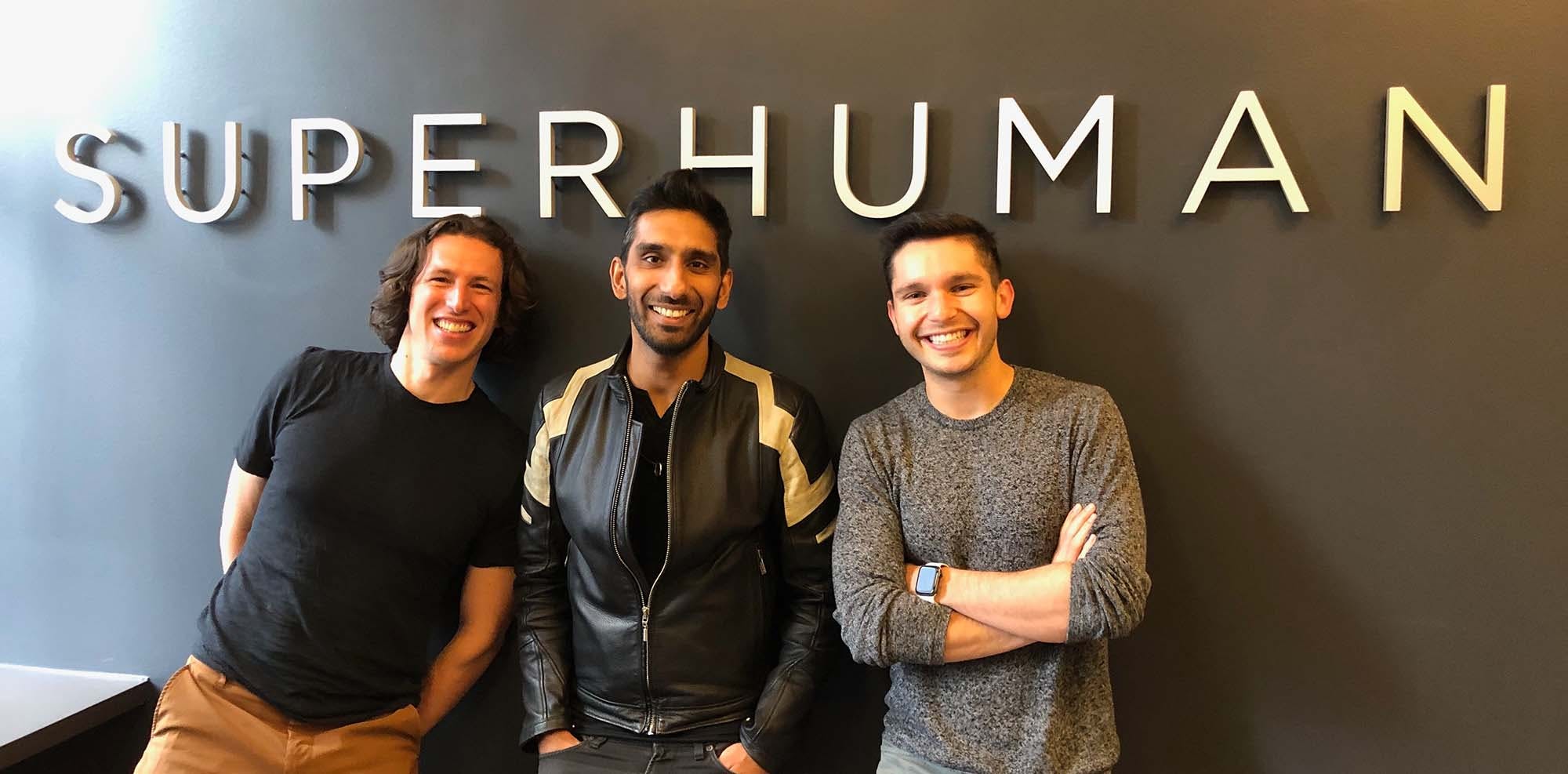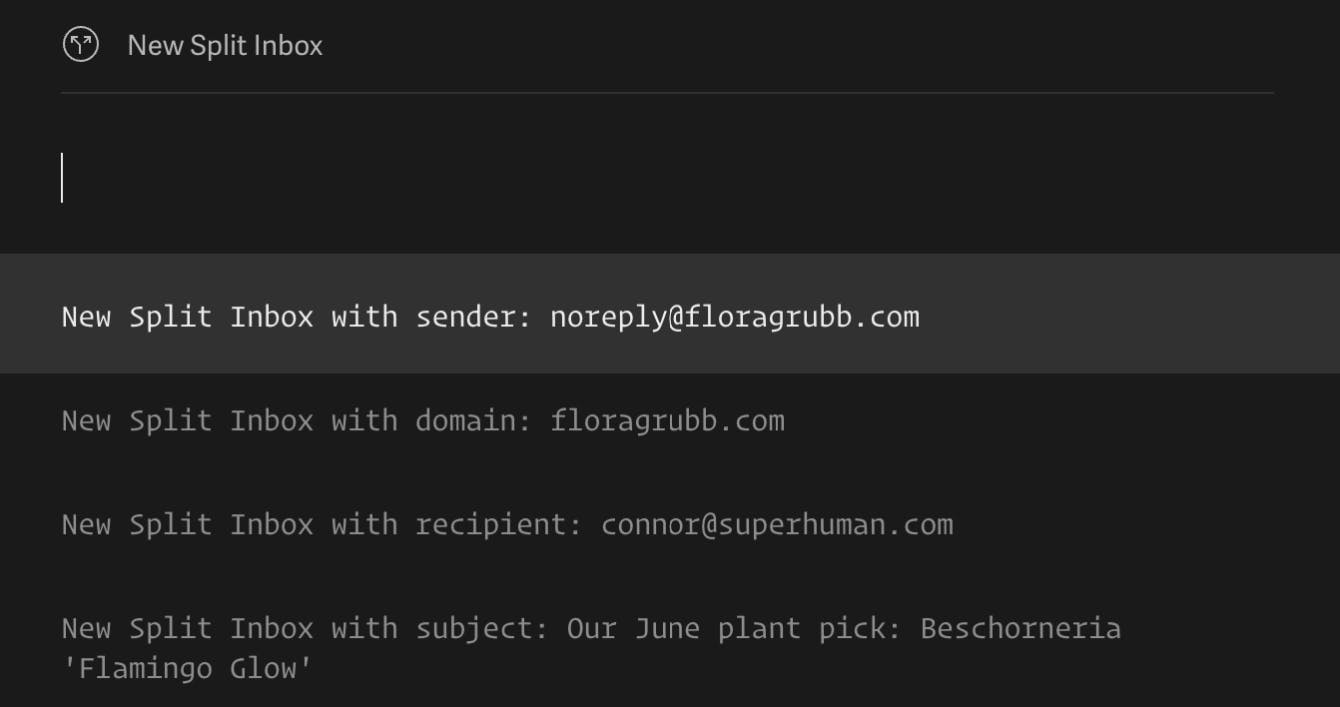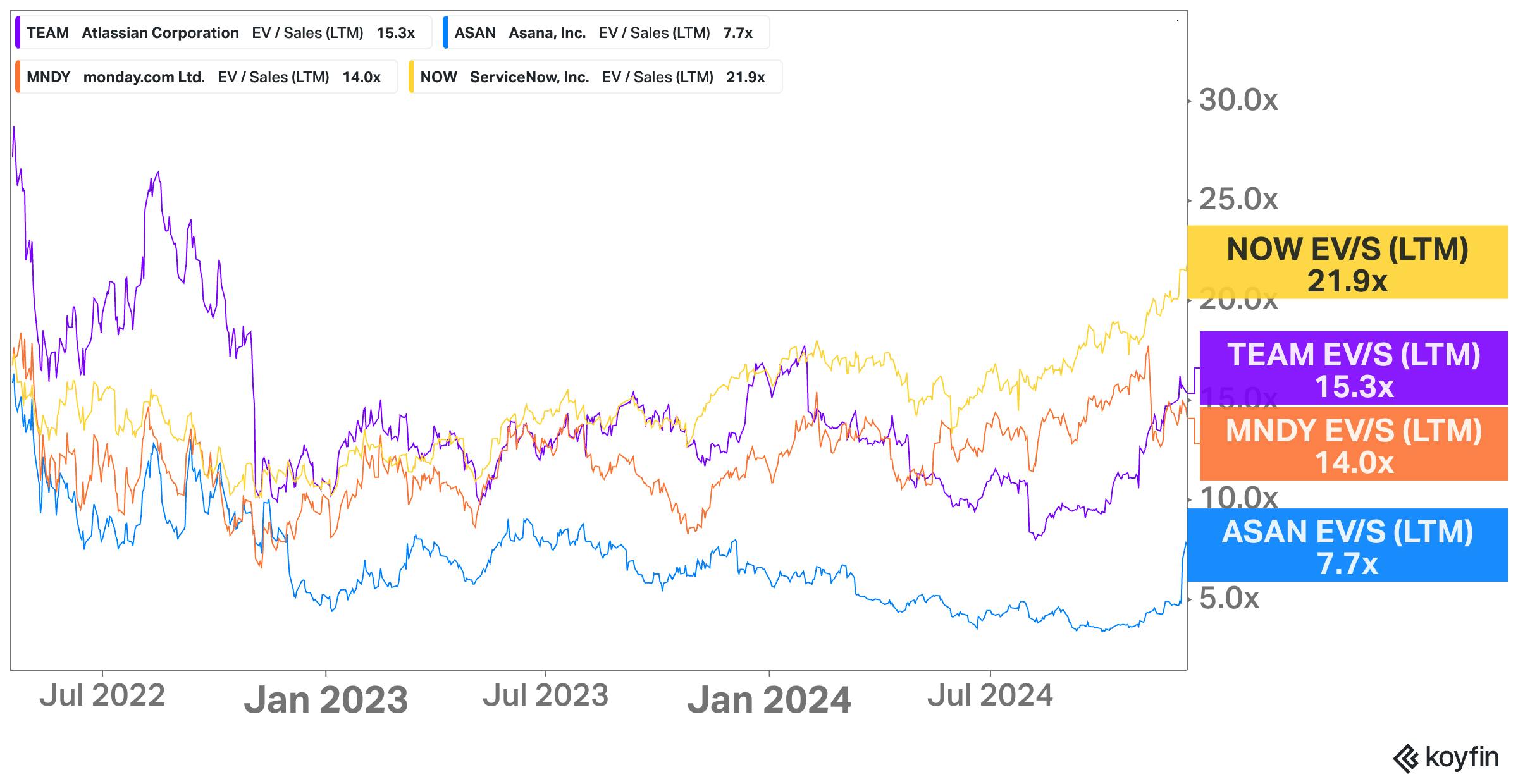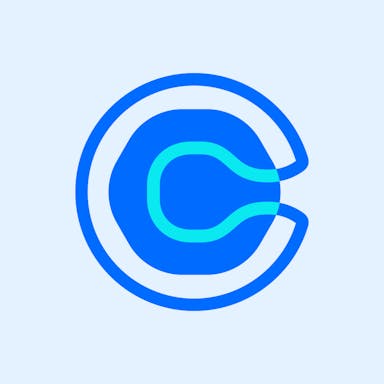Thesis
Emails remain critical for workplace communication, enabling teams to share information, coordinate projects, and interact with clients. Globally, 347.3 billion emails were sent daily in 2023, reflecting their pervasive use. This number is projected to grow to 392.5 billion by 2026. Approximately 99% of email users checked their inboxes daily as of 2023, highlighting its integration into work and personal routines. Modern workplace communication tools such as chat apps and project management platforms have grown in popularity, yet email remains dominant, especially for client interactions. For example, as of November 2023, 63% of professionals prefer email for external communications, compared to 11% who use chat tools.
Although it’s widely used and is a 50-year-old technology, email has seen minimal innovation since the launch of Gmail in 2004. Expectations for business tools like email have risen as consumer-facing software evolves with advanced features and polished user interfaces. Yet, email remains relatively unchanged. On average, full-time workers spend 2.6 hours daily on email as of 2019. A 2023 study showed that 25% of the heaviest email users can spend up to 8.8 hours weekly on email. Despite its widespread use, email platforms have lagged in adopting modern productivity features like AI-driven prioritization, advanced scheduling tools, smart categorization of messages, and integrated task management systems.
Superhuman is an email client designed to boost productivity and help users manage their inboxes more efficiently. Its primary goal is to enable users to achieve inbox zero, where no emails are sitting in a user’s inbox, by providing a streamlined email experience. Initially launched in 2017 as an invite-only platform, Superhuman has since gained popularity for its speed and efficiency. According to a 2021 survey by Superhuman, 30% of remote workers identified work-related communications as their biggest distraction. Superhuman addresses this challenge by reducing the time users spend on email, enabling them to focus on more productive tasks. The company claims its email client is three times faster than Gmail, saves users over four hours per week, and improves response times by an average of two days.
Founding Story

Source: Acquired
Superhuman was founded in 2015 by Rahul Vohra (CEO), Conrad Irwin (CTO), and Vivek Sodera.
In 2010, Vohra and Irwin founded Rapportive, an email add-on that displayed social media information about contacts inside users’ inboxes. Rapportive was acquired by LinkedIn in 2012 for $15 million. After the acquisition, both Conrad and Vohra began working for LinkedIn, developing LinkedIn Intro. Intro allowed users to “see what people look like, where they're based, and what they do.” Meanwhile, before founding Superhuman, Sodera co-founded LiveRamp, a data collaboration platform, in 2006. LiveRamp was acquired by Axicom for $310 million in 2014, but Sodera left the company in 2011.
While working on Rapportive, Vohra observed that the everyday user experience for Gmail users had been worsening steadily because users needed to add Chrome extensions for features that weren’t natively available, making the experience slow and the interface messy. This was when he thought of the idea for Superhuman and began building it after he left LinkedIn in 2014.
To keep his team focused and define a clear launch goal, he created a framework to measure product-market fit. Superhuman conducted detailed customer surveys to identify the most valuable features. Vohra set a key performance indicator: at least 40% of users should report they would be "very disappointed" if they could no longer use Superhuman — a benchmark identified by Sean Ellis as critical for startup success. Prioritizing product quality over rapid user acquisition, Superhuman's onboarding process included a survey to ensure the platform met user needs. Prospective users were sometimes declined from being onboarded if their desired features weren’t yet available.
Superhuman initially focused on a niche audience within Silicon Valley in 2017, targeting tech-savvy venture capitalists and professionals who relied heavily on email and sought productivity tools. This strategy combined exclusivity, by making the platform accessible only through referrals, with a dense, interconnected community to build early traction.
Vohra also attributed Superhuman's early momentum to evergreen content. For example, he authored an article offering advice to founders post-acquisition, in which he highlighted Superhuman. Additionally, his 2018 piece on product-market fit detailed how he applied this framework to Superhuman, providing insights for founders while subtly boosting Superhuman’s visibility.
Product
Superhuman is an email client focused on improving email management through speed and efficiency. It offers features such as advanced keyboard shortcuts, message snoozing, and email read status tracking to help users process messages quickly and stay organized. The platform is designed for professionals who want to minimize the time spent on email while maintaining productivity.
Features
Email Client: Superhuman connects to existing email providers like Gmail and Outlook and focuses on improving email efficiency through the use of keyboard shortcuts. During onboarding, users participate in a 30-minute session to learn how to navigate the platform and access its features. A full list of keyboard shortcuts is accessible using cmd/ctrl + K, helping users adapt to the platform more effectively.
Many keyboard shortcuts used in Superhuman are similar to those found in Gmail and Outlook, which already include shortcuts for navigation, composing, and managing emails. However, Superhuman enhances this functionality by building upon these shortcuts to support a mouse-free workflow. It ecnourages users to rely entirely on the keyboard to perform tasks without needing a mouse.

Source: The Verge
Superhuman’s user interface also offers features that help users customize how their inbox is organized. While it does not include automated focus areas like “Team” or ‘News” by default, users can configure workflows and shortcuts to better manage specific types of emails by creating custom "splits" or sections to categorize emails based on specific criteria like senders or topics.

Source: Superhuman
The purpose of creating split boxes in Superhuman is to reduce the fatigue associated with context switching when replying to different types of emails. This feature helps users focus on emails they deem most important.
Superhuman also natively implements features like read statuses allowing users to see when a recipient opens an email. Additionally, it integrates data from platforms such as LinkedIn, Clearbit (which integrated with HubSpot in November 2023), and AngelList into a contact panel. This panel allows users to view information like correspondents' job titles and social media profiles. Users can further personalize these profiles by adding details such as a bio, region, job title, websites, and additional social media links.
Initially available only on macOS with Gmail integration, Superhuman has since expanded its accessibility. As of August 2024, it offers native apps for iOS, Android, and Windows, while also supporting Outlook. However, it still does not support other email providers.
Superhuman AI: Superhuman AI enables users to compose emails, search for information, and summarize content more efficiently. The AI is designed to adapt to a user's unique writing style, improving with continued use. For example, users can input a few words or sentences, and the AI drafts a full, professional email. This feature is especially valuable on mobile devices, where typing longer messages is challenging. Additionally, mobile users can leverage dictation, further reducing the time spent on composing emails.
Superhuman AI can also generate automatic replies to incoming emails. Users can refine AI-generated or manually written text by prompting the AI to adjust the length, simplify the message, enhance clarity, or better match their tone and voice.
Instead of relying on traditional keyword-based searches, Superhuman’s AI allows users to search for information conversationally, much like interacting with LLMs. The AI also provides concise, one-line summaries of incoming emails to save users from reading entire messages. Furthermore, users can summarize previous email threads and incorporate those summaries into new conversations.
Scheduling: Superhuman integrates with users' calendars, allowing them to view their availability directly in the sidebar next to their inbox when discussing specific dates. It also includes automation features that send an email with the user's availability, enabling recipients to book time slots, similar to scheduling tools like Calendly. Through integrations with platforms like Zoom, Google Meet, and Microsoft Teams, Superhuman automatically adds video conferencing details to scheduled events. Additionally, teams can quickly schedule meetings by viewing each other’s availability.
Team collaboration: Superhuman also offers features designed to streamline collaboration and improve team productivity. Key features include the ability for team members to see if someone else is replying to the same email or has already read it, preventing duplicative responses. Teams can also share live email threads via a link, allowing for real-time editing and feedback, which enhances collaboration. Additionally, shared email templates are available to ensure consistent messaging across teams.
Team administration: Superhuman offers team administration features that enable managers to easily manage team access. This includes the ability to assign roles, invite or remove team members, and control user permissions within the platform. Additionally, Superhuman provides centralized billing, allowing managers to handle financial transactions with all billing information in one place. These tools make it easier for organizations to manage both user access and financial administration within Superhuman.
Security: Superhuman's email client is SOC 2 Type II compliant, ensuring that it meets rigorous internal controls to safeguard sensitive customer data across key areas such as security, availability, and confidentiality. For enterprises with specific compliance needs, Superhuman offers customized solutions, collaborating directly with clients to ensure their requirements are met. Additionally, Superhuman Enterprise leverages Google's Advanced Protection Program, which provides security to protect customer data from targeted online attacks, making it an option for businesses concerned about data protection.
CRM integrations: Superhuman supports sales representatives by integrating with platforms like HubSpot and Salesforce, enabling users to update contacts, log emails, and modify CRM data without switching applications. For example, sales representatives can add contacts directly to HubSpot or Salesforce from within Superhuman and update custom fields. These integrations streamline workflows, allowing teams to manage CRM data and communication efficiently. Additionally, features such as email scheduling, follow-up reminders, and collaborative email tools, like shared conversations, could further enhance productivity for sales teams who heavily rely on email for lead generation and client communication
Support and training: Superhuman provides users with resources like coaching and webinars to enhance their productivity. For enterprise clients, the platform offers more personalized support, including a customer success manager and account manager. These roles focus on helping organizations maximize the utility of Superhuman for their teams. Enterprise users also benefit from tailored onboarding, scaled support, and success planning to ensure the adoption and effective use of the platform's features.
For Enterprises
Superhuman Enterprise is tailored for organizations seeking enhanced email productivity with advanced security and team-focused collaboration tools. It offers features such as centralized account management, dedicated customer success managers, and advanced security protocols, including SOC 2 compliance and Google Advanced Protection. Teams can access productivity training, concierge onboarding, and priority customer support to ensure seamless integration and efficient use of the platform.
In addition to its core capabilities, Superhuman Enterprise includes AI-powered tools for email management, such as auto-summarizing conversations and generating replies, alongside collaboration enhancements like shared drafts and team comments. The solution also integrates with major sales platforms like Salesforce, HubSpot, and Pipedrive, catering to businesses with dynamic and collaborative workflows.
For Sales
Superhuman for Sales is designed to enhance the productivity and efficiency of sales teams by streamlining email communication. It integrates with CRMs like Salesforce and HubSpot, allowing users to add contacts, log emails, and update records directly from their inbox. Features such as follow-up reminders, email scheduling, and AI-powered insights help sales representatives focus on building relationships and closing deals. With its emphasis on speed, simplicity, and seamless integration, Superhuman empowers sales teams to accelerate the sales cycle.
Market
Customer
Superhuman initially targeted power users, often referred to as "prosumers," who valued its speed and efficiency in managing high volumes of email. These users, typically early adopters and productivity enthusiasts, were drawn to the platform’s promise of faster email processing, though its reliance on keyboard shortcuts required a steep learning curve.
Since then, Superhuman has expanded its focus to include the enterprise market, addressing the needs of teams and organizations by introducing collaboration tools, enterprise-grade security, and integrations with platforms like Salesforce and HubSpot. This move was intended to broaden its appeal to businesses looking to optimize team productivity. Additionally, Superhuman has specifically targeted sales representatives, or professionals who rely heavily on email for lead generation and client communication, by offering features such as follow-up reminders, scheduled send, and seamless CRM integration.
Notable customers of Superhuman as of December 2024 include Spotify, Compass, Notion, Brex, Dropbox. Superhuman’s enterprise page also lists OpenAI and Deel among its customers.

Source: Superhuman
Market Size
In 2023, the global email client software market was valued at around $1.4 billion and was expected to reach $3.3 billion by the end of 2030, representing a CAGR of 11.8%. Superhuman also offers a scheduling and calendaring solution, which taps into the appointment-scheduling software market. That market was valued at $406.9 million in 2023 and was expected to reach $1.6 billion by 2032. Since Superhuman also serves sales teams, it taps into the global email marketing software market which was valued at $1.4 billion in 2023 and is forecasted to grow to $3.7 billion by 2032, representing an 11.8% CAGR.
Competition
Shortwave: Founded in 2020 by a team of ex-googlers, Shortwave is an AI-based email client, to-do list, and calendar scheduler. In April 2020, it raised a $9 million Series A round from Union Square Ventures and Lightspeed Venture Partners. Shortwave has many of the same features as Superhuman, such as inbox splitting, scheduling email sends, read status, and a variety of keyboard shortcuts. It also offers the same AI features like drafting emails, summarizing, and searching for information through its chatbot. However, its pricing is lower than Superhuman. It has a free plan and paid plans start from $14 for up to $30 per user/month.
Spark Mail: Spark is an email client that unifies inboxes by collecting emails and automatically categorizes them for easy processing, used by 17.5 million people globally as of December 2024. Spark is part of Readdle, a privately held company behind productivity apps like PDF Expert, Scanner Pro, Documents, and Calendars. Readdle was founded in 2007 and does not publicly disclose its funding. Spark Email automatically categorizes some emails into bundles, like “newsletters” and “notifications,” and lets users recategorize anything they want. Spark also offers a team plan which includes other collaboration and messaging features.
Spark Mail and Superhuman are both email clients focused on improving productivity but cater to slightly different needs. Spark emphasizes team collaboration with features like shared drafts and in-email comments, making it ideal for group workflows. Superhuman prioritizes individual speed and efficiency with AI-powered triage, advanced shortcuts, and a minimalist interface. While Spark offers a freemium model accessible to small businesses, Superhuman targets professionals and enterprises with its premium pricing and tailored productivity tools.
Spike: Founded in 2014, Spike raised $23 million from Insight Partners for its Series A in 2021. Spike turns email inbox into a chat-like interface bringing messaging, collaboration, tasks, and video/audio calls into one place. It improves productivity by reducing the time it takes to switch apps and reducing mental strain from context-switching. It’s also known for its advanced search capabilities for files in emails, and similar to Superhuman aims to create a faster email experience. It also implemented AI email drafting capabilities like Superhuman.
Hey: Hey is an email product from 37 Signals, creator of productivity software Basecamp. The company was founded in 1999 and raised a $6 million Series A from Jeff Bezos in 2006. Hey's email "screener" separates unread messages into different mailboxes based on importance. Hey's sorting puts newsletters and similar emails into a scrollable feed. Hey has a workflow that allows for fast labeling and sorting. The company also offers some hotkeys, but its offering is not as comprehensive as Superhuman’s. Hey is also harder to learn without assisted onboarding or a command palette. It is, however, cheaper than Superhuman at a cost of $99 a year.
Gmail: Gmail is Google’s email client that was created in 2004. Gmail is free and integrated through the Google Workspace suite of tools. Gmail also offers integrated chat for teams. As of October 2024, Gmail had more than 1.8 billion active users globally. Additionally, in 2023, Google embedded generative AI in Gmail to help users generate email summaries, reply to emails, and compose new emails.
Business Model

Source: Superhuman
Superhuman has a subscription-based model with three different tiers:
The “starter” plan is for individuals and small teams, priced at $30/month/user.
The “business” plan is designed for groups larger than five accounts, priced at $40/month/user.
The "Enterprise" plan, which allows Superhuman to be deployed by large companies, has custom pricing.
All three plans offer identical product accessibility. The differences lie in access to security measures, sales features, and advanced AI features. The starter plan lacks the sales features and advanced AI features, while the difference between business and enterprise include security features, better access to support through 1:1 coaching and video call technical, and a dedicated account manager.
Traction
In 2020, Forbes reported that Superhuman’s estimated annual revenue was $20 million in 2019. Dex, a personal CRM platform, began integrating with Superhuman in April 2021. In June 2023, Superhuman integrated with Salesforce to streamline workflows for sales teams by enabling CRM updates directly within the email platform. This feature allows users to add new contacts, log emails, and modify CRM entries without switching between applications. Additionally, in March 2024, Superhuman integrated with HubSpot, offering similar benefits as Salesforce tailored for sales teams.
According to an unverified source, Superhuman has 50K customers as of December 2024. Some of Superhuman’s clients as of December 2024 include Spotify, Compass, Notion, Brex, and Dropbox. As of December 2024, an unverified estimate indicated that Superhuman’s revenue could be around $36.5 million.
Superhuman has helped Brex improve its productivity and responsiveness. With Superhuman, Brex employees respond to emails three times faster than before, reducing response times by 3.5 hours as of December 2024. Additionally, the platform has saved Brex a total of 183 hours each month, helping the team focus on more strategic work. These efficiency gains are achieved through Superhuman’s features, such as email organization, smart scheduling, and follow-up reminders.
Valuation
As of December 2024, Superhuman has raised a total of $108 million in funding from investors including IVP, a16z, Tiger, First Round, Ashton Kutcher, Mila Kunis, Will Smith, and The Chainsmokers. In August 2021, the company raised a $75 million Series C at an $825 million valuation. Its Series B took place in May 2019, when the company raised $33 million at an unknown valuation.
Based on its $825 million valuation as of December 2024, the company has a revenue multiple of ~22.6x as of December 2024. Multiples of publicly-traded SaaS companies designed to improve productivity in enterprises including Asana, Atlassian, Monday.com, and ServiceNow have decreased since 2022 and are trading at revenue multiples ranging from 7.7x to 21.9x as of December 2024. This indicates that Superhuman’s multiple is slightly higher than comparable companies.

Source: Koyfin
Key Opportunities
AI Implementation
Superhuman’s implementation of AI tools for email summarization and drafting offers a significant opportunity to enhance user productivity. By October 2023, 40% of users had activated its AI features, indicating early traction in this space. While competitors like Spark and Gmail have also integrated AI, Superhuman differentiates itself through a user-centric approach. By asking targeted questions such as “How would you feel if you could no longer use Superhuman?”, the company has refined its product based on direct feedback, achieving product-market fit. This strategy, as outlined in CEO Rahul Vohra’s guide to finding product-market fit, has historically driven sticky user engagement and organic growth through word-of-mouth. Leveraging this approach in its AI development could further cement its competitive edge.
However, Superhuman faces challenges in the quality of its AI tools compared to competitors like Gmail, which benefits from over 1.8 billion monthly active users as of October 2024, and extensive data integration from other Google products such as Google Docs. To compete effectively, Superhuman must capitalize on its ability to implement the most impactful features through its rigorous user feedback process, ensuring that its AI remains relevant and valuable for its user base.
Enterprise Expansion
Superhuman is shifting its focus toward businesses and teams, moving beyond its initial emphasis on individual users. In October 2023, CEO Rahul Vohra noted that much of the company's recent growth has come from teams, highlighting an opportunity to serve larger organizations. To meet the needs of business clients, Superhuman has introduced enterprise-grade security measures and collaboration tools designed to improve team productivity. Notable enterprise customers include companies like Notion, Airtable, Compass, and Deel.
This pivot offers significant growth potential, as the enterprise market represents a scalable customer base. However, it also presents challenges. Superhuman has historically relied on user-led growth, driven by product quality and word-of-mouth referrals. To succeed in the enterprise space, the company must adopt sales-led strategies, building dedicated sales teams and processes to engage with larger organizations and ensure a strong return on investment for its clients.
Key Risks
Learning Curve
Superhuman’s reliance on keyboard shortcuts as a primary means of speeding up the user experience presents a potential challenge, particularly when scaling across entire organizations. While individual users may quickly adapt to these shortcuts, standardizing their use across diverse teams with varying technical proficiencies could prove difficult. This complexity may limit the appeal of the software in larger, less tech-savvy organizations.
Furthermore, although the TAM for email communication is substantial, Superhuman’s effectively addressable market may be smaller. The software’s focus on advanced productivity features and its premium pricing model could restrict adoption to specific user groups, such as tech-forward companies or power users, leaving out broader segments of the market. Addressing these challenges will be crucial as Superhuman seeks to expand its enterprise offerings and compete with established players like Gmail and Outlook.
Competitive Landscape
Low barriers to entry in the productivity software space present a risk for Superhuman, as established companies like Google and Microsoft can potentially replicate its features with relative ease. Additionally, new startups with innovative approaches or a stronger value proposition could enter the market and attract users away. This risk is particularly relevant in the email productivity segment, where incumbents like Gmail and Outlook already dominate and possess extensive user bases and resources for product development.
To address this, Superhuman has sought to differentiate itself by targeting specific job functions, such as sales, and enhancing its appeal to enterprise users through features like team collaboration, CRM integrations, and enterprise-grade security. While this focused strategy allows Superhuman to carve out a niche, sustaining a competitive advantage will require continued innovation and a deep understanding of its target users' needs to stay ahead of both large incumbents and emerging competitors.
Summary
Superhuman is an email client designed for businesses and individuals, with a focus on productivity and efficiency. The company developed its platform by collaborating with users to identify pain points in traditional email clients and iterating on those insights. To remain competitive, Superhuman will need to continue innovating, especially as major incumbents like Google and Microsoft introduce significant AI-driven enhancements to their email products.


